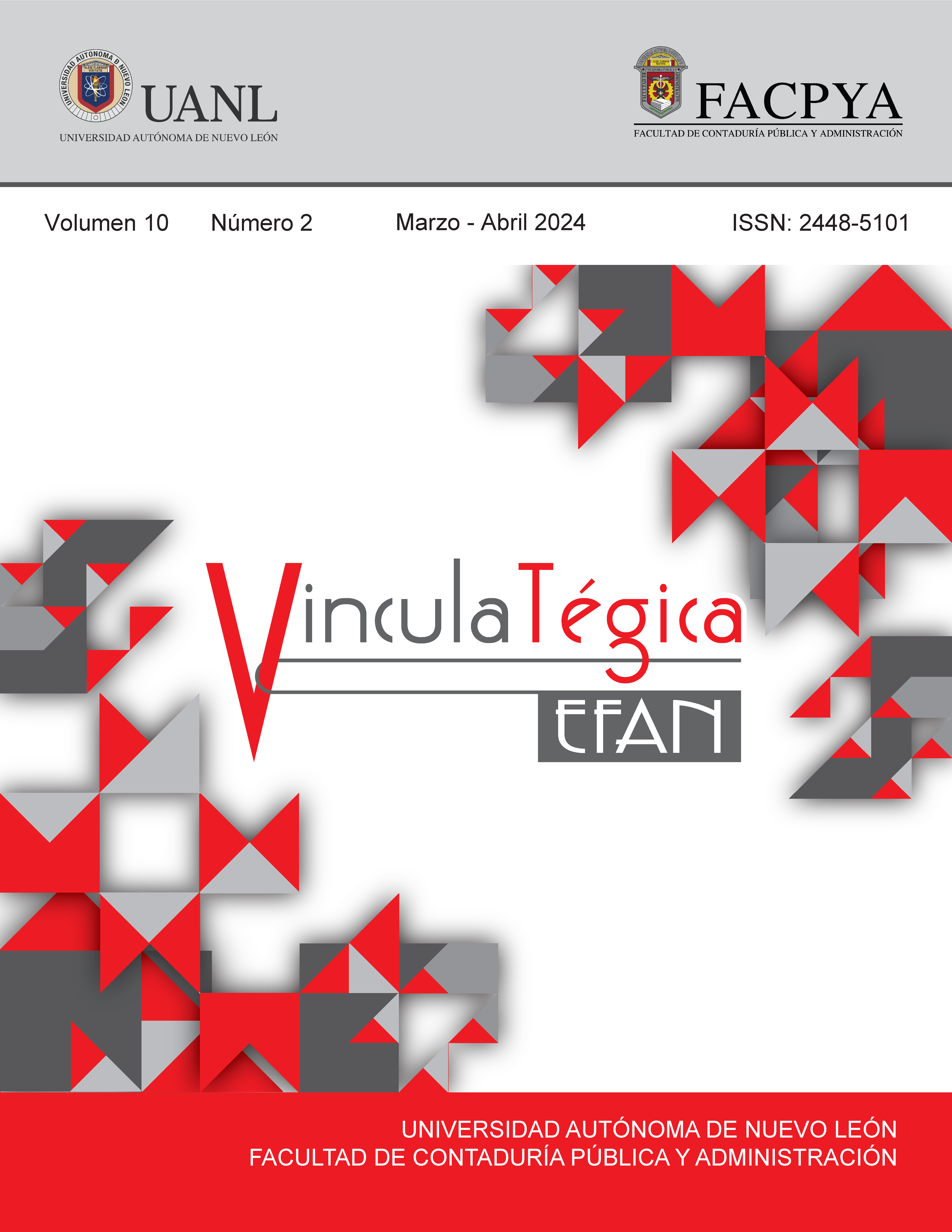Resilience in the Use of Interactive Teaching Applications in Post-Pandemic College Students. Comparative Study
DOI:
https://doi.org/10.29105/vtga10.2-477Keywords:
Resilience, Interactive educational applications, Students, University, PandemicAbstract
This article is part of a previous research in which the frequency of use and perception of various interactive didactic applications in undergraduate students of a public university was analyzed, contrasting them with the use that young people currently make of these same didactic applications. This research was quantitative, with an experimental and transversal design with a descriptive-observational scope. The samples were non-probabilistic and incidental. In the first, the participants were 112 students, and the second were 106 students from the same university. Both groups were administered the survey called: “Interactive Didactic Applications Scale”, which is composed of 10 Likert-type items. The first sample was taken in the year 2018, and the second in the year 2023, this allowed contrasting the difference between their answers, since in the first, the Power Point application turned out to be the one of greater knowledge and use by the students, however, after the pandemic, the students showed greater variability in the use of the various interactive teaching applications, although, although they now use more than one, Power Point is still the one of greater knowledge.
Downloads
References
Abreu-Hernández, L., León-Bórquez R. & García-Gutiérrez, J. (2020) Pandemia de Covid-19 y educación médica en Latinoamérica. FEM 2020, 23(5), pp. 237-24.2 DOI: https://doi.org/10.33588/fem.235.1088
Ashimine, H. Y. (2022). IMPACTO DE LA PANDEMIA POR COVID-19 Y LA RESILIENCIA DE LOS ESTUDIANTES UNIVERSITARIOS. Revista Ciencia y Cultura, (9), 26-26. DOI: https://doi.org/10.35563/revan.v9i2.437
Basilotta-Gómez-Pablos, V.; Matarranz, M.; Casado-Aranda, L. & Otto, A. (2022). Teachers’ digital competencies in higher education: a systematic literature review. International Journal of Educational Technology in Higher Education. 19(8). https://doi.org/10.1186/s41239-021-00312-8 DOI: https://doi.org/10.1186/s41239-021-00312-8
Bernacki, M., Byiers, B. J., & Kelly, M. (2018). Comparing the effects of Kahoot!, Quizlet and pencil-and-paper quizzes on short-term retention of course material. Journal of Instructional Psychology, 45(3), 171-178.
Bin Abdulaziz Abdulrahman Alajlan, A. (2019). Las competencias requeridas por los profesores de secundaria para aplicar la educación en Arabia Saudita a la luz de ciertas variables. Revista de Investigación Científica en Educación, 20(12), 318-361.
Cámara-Cuevas, N. y Hernández-Palaceto, C. (2022). El uso de las herramientas digitales para la enseñanza en educación superior durante la pandemia por COVID19 un estudio piloto. Eduscientia. Divulgación de la ciencia educactiva, 5(9), 43-57, https://www.uv.mx/coil/files/2022/06/El-uso-de-las-herramientas-digitales-para-la-ensenanza- en.pdf
Carcaño Bringas, E. (2021). Herramientas digitales para el desarrolo de aprendizaje. Revista Vinculado. https://vinculando.org/educacion/herramientas-digitales-para-el-desarrollo-de-aprendizajes.html
Chen, C. M., Chen, Y. L., & Chou, Y. W. (2018). The effect of integrating mobile devices with teaching and learning on students' learning performance: A meta-analysis and research synthesis. Computers & Education, 128, 252-275.
Cheng, E. C. K., & Li, L. (2021). Examining the relationship between resilience and interactive digital tools use among undergraduate students during the COVID-19 pandemic. Education Sciences, 11(1), 23.
Cortés, A. (2016). Prácticas innovadoras de integración educativa de TIC que posibilitan el desarrollo profesional del docente [tesis para obtener el grado de doctor]. Universidad Autónoma de Barcelona, España. https://www.tdx.cat/bitsream/handle/10803/400225/acr1de1.pdf?sequence=1
Gazzo, M. (2020). La educación en tiempos del COVID-19: nuevas prácticas docentes, ¿nuevos estudiantes? Red Sociales, Revista del Departamento de Ciencias Sociales, 7(2), 58-63. http://ri.unlu.edu.ar/xmlui/handle/rediunlu/750
Göktaş, Y., Yıldırım, S., & Yıldırım, Z. (2017). A systematic review of the use of technology in language learning. Turkish Online Journal of Educational Technology, 16(2), 14-23.
Haryanto, A., & Mustadi, A. (2019). The use of powerpoint presentation as teaching media in the classroom. Journal of Educational Sciences, 3(1), 7-12.
Hsu, T. C., & Wang, S. K. (2018). Integrating Kahoot into teaching and learning: The impacts on student motivation and learning performance. Journal of Computer Assisted Learning, 34(3), 193-206. https://doi.org/10.1111/jcal.12249 DOI: https://doi.org/10.1111/jcal.12249
Jirayut, S., Boonmee, R., & Prasit, S. (2018). The use of Quizlet in teaching and learning English vocabulary. Journal of Humanities and Social Sciences, 6(2), 46-52.
Joachin-del Carpio, M. M., Osorio, B. L. P., & Méndez-Vergaray, J. (2022). Adaptación de estudiantes universitarios a la virtualidad educativa en tiempos de pandemia. Revisión teórica. Revista Científica Arbitrada Multidisciplinaria PENTACIENCIAS-ISSN 2806-5794., 4(2), 246-262.
Kahoot! AS. (2021). About Kahoot!. Recuperado el 9 de abril de 2023, de https://kahoot.com/about-us/
Kim, H., & Hwang, J. (2018). Exploring the effects of visual aids in science education. International Journal of Science and Mathematics Education, 16(1), 59-76.
Kwok, L., & Li, V. (2021). Digital resilience in higher education: Examining the relationship between resilience and the use of technology for learning. Journal of Further and Higher Education, 1-16.
Martínez-Guevara, J. L. & Molina-Montalvo, H. I. (2022). La transición abrupta de lo presencial a lo virtual n el aula universitaria. Análisis comparativo el proceso enseñanza aprendizaje. En Educación en tiempos de Covid-19, Una aproximación a la realidad en México: experiencias y aportaciones. Ediciones Comunicación Científica
Martínez-Miraval, MA y García-Rodríguez, ML (2022). Razonamiento covariable de estudiantes universitarios en un acercamiento al concepto de integral definido mediante sumas de Riemann. Formación universitaria , 15 (4), 105-118. DOI: https://doi.org/10.4067/S0718-50062022000400105
McGarr, O. (2018). Powtoon and Learning Engagement: A Comparative Study of Powtoon, PowerPoint, and Impromptu Speech. Journal of Educational Technology & Society, 21(3), 183-193. https://www.jstor.org/stable/26419398
Murray, M. C., Pérez, J., Geist, M. R., & Hedrick, A. (2016). Comparison of student preferences for PowerPoint, Prezi, and oral lecture presentations in undergraduate surgical education. Journal of Surgical Education, 73(6), 1074-1079. https://doi.org/10.1016/j.jsurg.2016.05.001 DOI: https://doi.org/10.1016/j.jsurg.2016.05.001
Olaore, I. B., & Oni, A. A. (2020). Impact of e-learning on students' resilience during COVID-19 pandemic: A case study of undergraduate students in Osun State, Nigeria. International Journal of Interactive Mobile Technologies, 14(8), 86-96.
Pardo Kuklinski, H & Cristobal, C. (2022). Expandir la universidad más allá de la enseñanza remota de mergencia ideas hacia un modelo híbrido post-pandemia. Revista Panaméricana de Pedagogia. 34. pp. 179-182. https://doi.org/10.21555/rpp.vi34.2589 DOI: https://doi.org/10.21555/rpp.vi34.2589
Pérez-Martínez, K.; Mendoza-Vargas, M. & Patiño-Rodríguez, I. (2018). Aplicaciones didácticas interactivas: Su conocimiento y su uso en estudiantes del 2° semestre de FACPYA. Vinculatégica Efan. 403-408. DOI: https://doi.org/10.29105/vtga4.1-782
Powtoon Ltd. (2021). About Powtoon. Recuperado el 9 de abril de 2023, de https://www.powtoon.com/about/
Prezi Inc. (2021). About Prezi. Recuperado el 9 de abril de 2023, de https://prezi.com/about/
Rahmayoni, R., Erianjoni, E., Iswandi, U. y Anwar, S. (2022). La aplicación de la estrategia Ttw basada en aplicaciones de Canva para aumentar la motivación de aprendizaje y los resultados de aprendizaje de los estudiantes en la materia de geografía. Revista de Sumatra sobre desastres, geografía y educación en geografía, 6(2), 60-66.
Zhang, D., Chen, X., & Liu, Z. (2020). Technology-enhanced learning in education: A systematic review and meta-analysis. Educational Research Review, 30, 100326 DOI: https://doi.org/10.1016/j.edurev.2020.100326
Downloads
Published
How to Cite
Issue
Section
License
Copyright (c) 2023 Katia Site Pérez Martínez, Juan Enrique Saldaña Pérez, Marta Magdalena Mendoza Vargas

This work is licensed under a Creative Commons Attribution 4.0 International License.
a). Authors keep copyright and give the journal the right of the first publication of the work under a Creative Commons attribution license. This license allows others to share the work as long as original authorship and initial publication in this journal is acknowledged.
b). Authors may make other independent and additional contractual agreements for the non-exclusive distribution of the version of the article published in this journal (e.g., include it in an institutional repository or publish it in a book) as long as they clearly indicate that the work was published for the first time in this journal.







